The Israeli government says it expects all living hostages held in Gaza to be released on Monday morning and that it is preparing for the release of about 2,000 Palestinian detainees, the crucial next phase of the ceasefire deal that could end the two-year war in Gaza.
“We are expecting all 20 of our living hostages to be released together at one time to the Red Cross and transported among six to eight vehicles,” said the Israeli government spokesperson Shosh Bedrosian.
Hostages will be driven to a military base to see their families or to hospitals if medical care is needed. The remains of deceased hostages are expected to be sent to the national Institute of Forensic Medicine for identification.
An unnamed Hamas official told Al Jazeera that living hostages had been gathered in Gaza and the militant group would meet the Red Cross on Sunday night to agree the logistics of their release.
The militant group holds 48 hostages, 20 of whom are believed to be alive.
An international taskforce will work on finding the remains of hostages not released on Monday, with many believed to be buried under the rubble somewhere in the devastated Gaza Strip.
Israel will also release nearly 2,000 Palestinian detainees, the vast majority of whom will be sent to Gaza or exiled to neighbouring countries, once Israeli hostages are back on Israeli soil.
Several Hamas commanders, prominent Palestinian political figures and detained doctors whose releases were requested by Hamas were not on the list of Palestinians to be freed. The doctors Hussam Abu Safiya and Marwan al-Hams, who were detained in Gaza during the war, as well as the prominent Palestinian political leader Marwan Barghouti, were not on the list.
Hamas said it was still in talks with Israeli negotiators to secure their release.
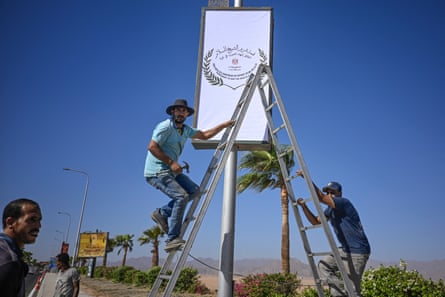
The hostage-detainee swap is the first step in Donald Trump’s 20-point plan to end the war in Gaza. A ceasefire has been in place since Friday afternoon, but most of the details of the US president’s proposals need to be negotiated before a lasting end to the war is established.
The US president will visit Jerusalem on Monday to speak at the Knesset, as well as meeting families of the hostages.
Trump will then fly to Sharm el-Sheikh in Egypt where he will co-chair a “peace summit” attended by the leaders of more than 20 countries aimed at finalising a permanent truce in Gaza.
As he boarded Air Force One on Sunday evening, Trump said that the “war is over” and “everybody’s cheering”.
“There are 500,000 people yesterday and today in Israel and also the Muslim and Arab countries all cheering … That’s never happened before,” he said.
Palestinians are desperate to see the ceasefire extend into a permanent end to the war, after two years of an Israeli campaign that destroyed most of the strip, killed more than 67,000 Palestinians and wounded about 170,000. Israel stands accused of conducting genocide in Gaza by a UN commission of inquiry and several human rights bodies.
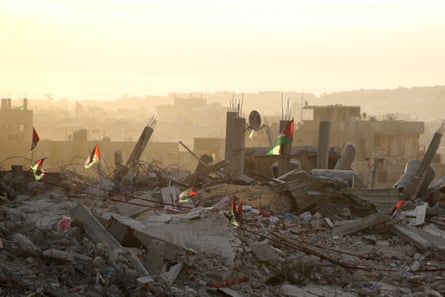
Israel denies the claim of genocide and says its conduct in the war, launched in retaliation for an attack by Hamas-led militants that killed about 1,200 people and took 251 hostage, constitutes self-defence.
In Israel, preparations were under way to receive the hostages, who will be taken to a military base to undergo an examination before being taken to hospitals, which have run drills to prepare for the releases, using actors in place of hostages to practise.
“We are very excited, waiting for our son and for all the 48 hostages,” Hagai Angrest, whose son Matan is among the 20 hostages still held in Gaza, told Reuters.
On Sunday night, tens of thousands of people cheered in “Hostages Square” in Tel Aviv as the US Middle East envoy, Steve Witkoff, spoke alongside Trump’s son-in-law Jared Kushner.
“I dreamed of this night. It’s been a long journey,” Witkoff said. The crowd yelled praise for Trump, but booed when Witkoff mentioned the Israeli prime minister, Benjamin Netanyahu.
Families in the occupied West Bank also prepared to receive loved ones who were being let out of Israeli jails. Israeli authorities instructed families not to be vocal in their celebrations and warned them to limit their interaction with the media.
Roughly 2,000 Palestinian detainees are due to be let out around the same time as the hostages are released. About 1,700 were detainees from Gaza, while 250 were longtime prisoners of Israel, among them Palestinian leaders. About half of the 250 are to be released to Gaza or exiled to neighbouring countries, while the other half will be released to the West Bank or East Jerusalem.
As preparations continued for the hostage swap, humanitarian groups geared up to send aid into Gaza.
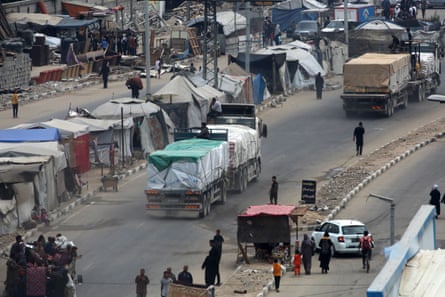
Cogat, the Israeli military agency that oversees humanitarian aid in Gaza, said it expected about 600 trucks to enter the strip each day, starting on Sunday. This would restore aid to about prewar levels, after months of severely restricted aid into the strip.
The UN said about 170,000 metric tonnes of food, medicine and other humanitarian aid was ready to enter Gaza once Israel permits its entry. Tents, high-energy food for malnourished children and menstrual hygiene supplies were among the prioritised aid items.
A spokesperson for the World Food Programme, Abeer Etefa, said that roads were being cleared and repaired on Sunday to help facilitate future aid deliveries.
The restoration of aid follows months of Israeli siege on Gaza, which resulted in famine in parts of the territory, according to the world’s leading authority on food crises. At least 459 people have died of hunger over the past two years and starvation has spread through the territory since May.
The restoration of regular aid is mandated by the Trump plan. The UN will once again coordinate supplies into Gaza after months of being barred by Israel from doing so.
The role of the private Gaza Humanitarian Foundation, which was meant to replace the UN in aid distribution in Gaza, remained unclear. The foundation’s logistics sites in Gaza had stopped operating after the ceasefire deal started.
The GHF was widely seen as a failure, with its model of distribution marked by overcrowding and death. More than 1,000 people were shot to death by Israeli soldiers during the daily scramble to access food at the GHF sites, chaos which aid groups said was brought on the foundation’s militarised model of provision. The GHF consistently denied any wrongdoing.
A spokesperson for GHF told Reuters there was a temporary closure of aid sites during the hostage transfers, but that there was “no change to our long-term plan”.
The US will deploy up to 200 troops in Israel to help establish a taskforce to assist with stabilisation efforts in Gaza. No US troops will be deployed within Gaza, but will advise the taskforce, known as the Civil-Military Coordination Center (CMCC), from within Israel.
The head of US Central Command, Adm Brad Cooper, met the Israeli military chief, Eyal Zamir, while travelling to Gaza alongside Witkoff and Kushner. Cooper said his visit was in service of the establishment of the CMCC.





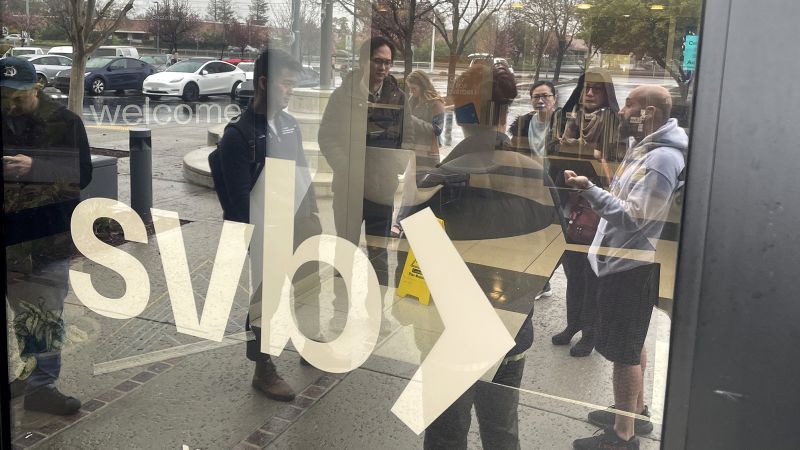

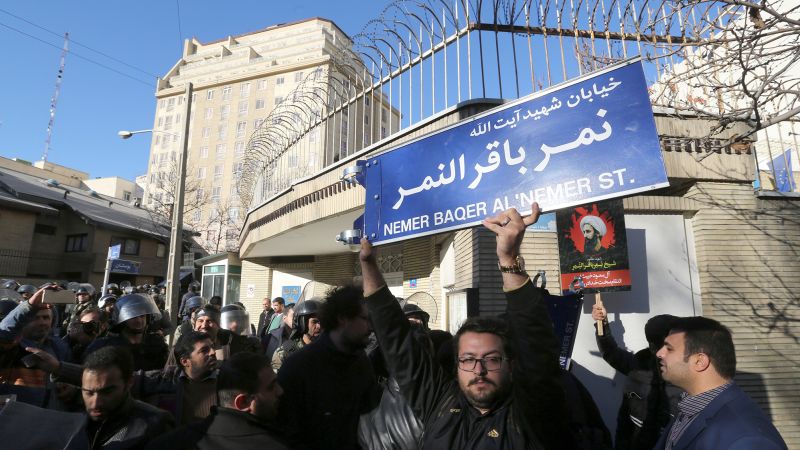
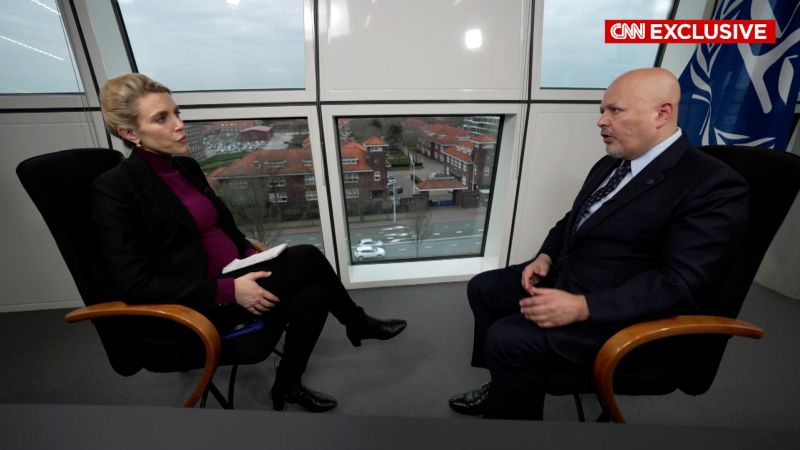
 English (US)
English (US)